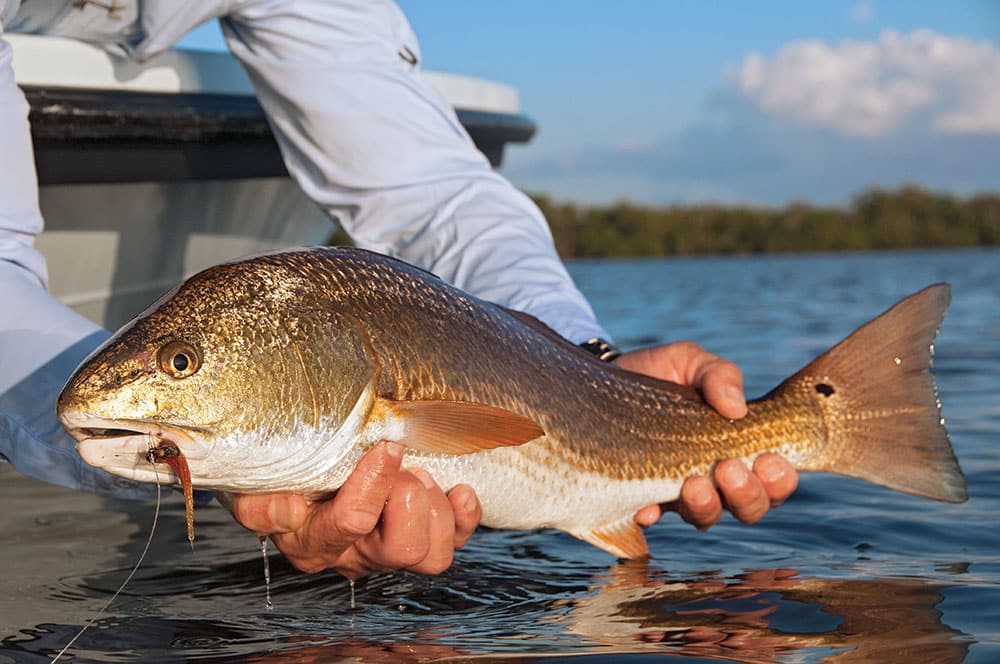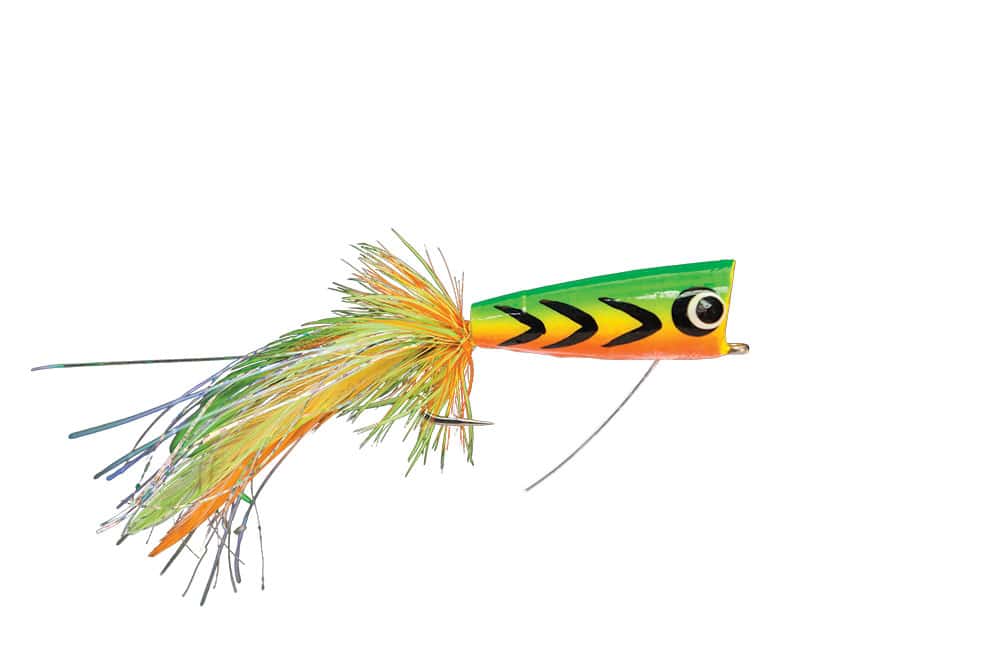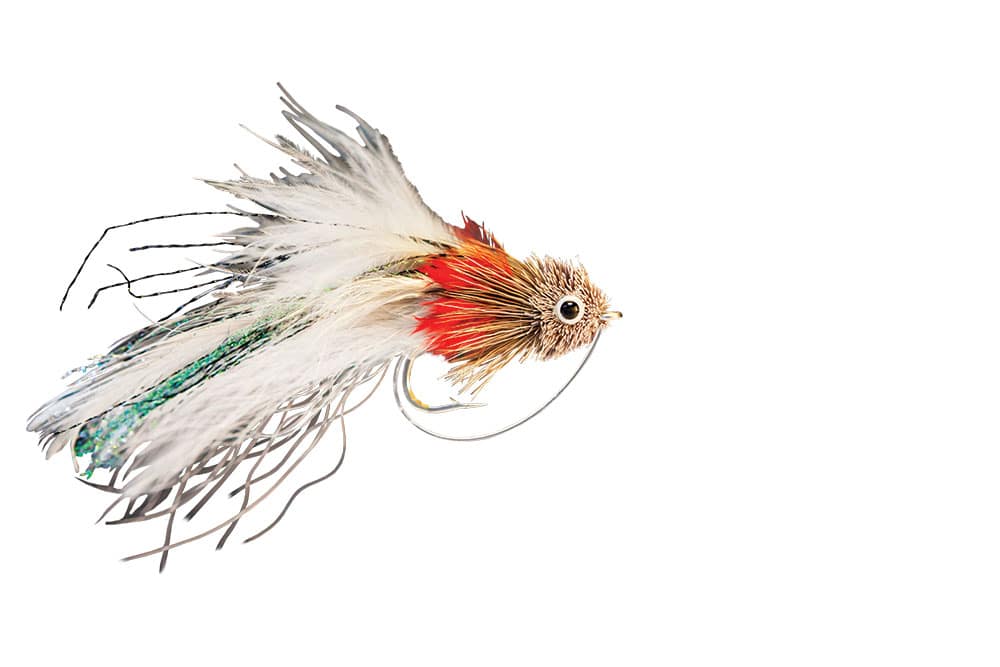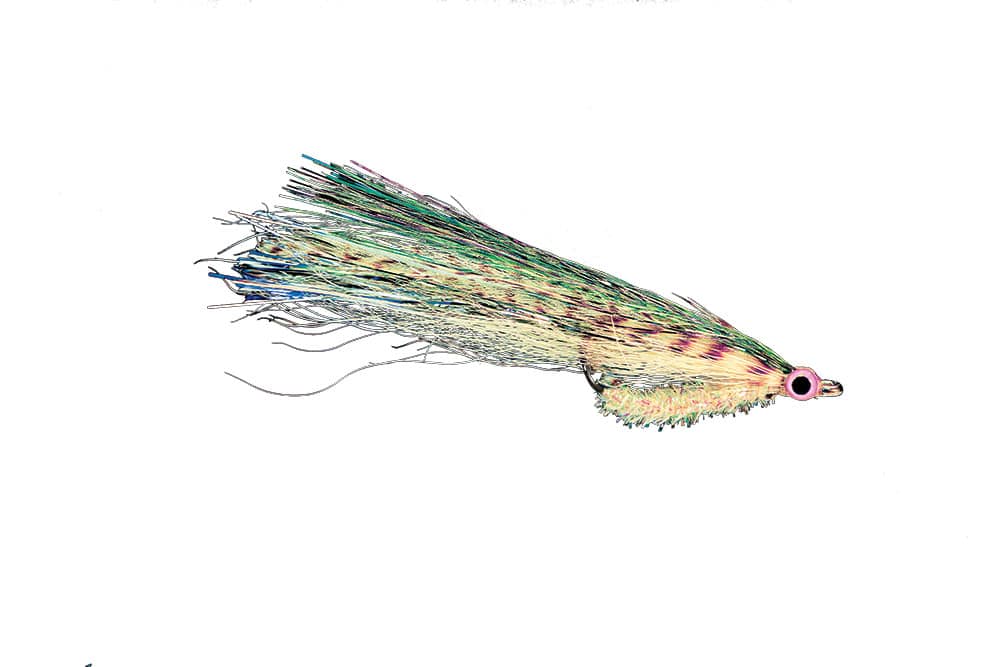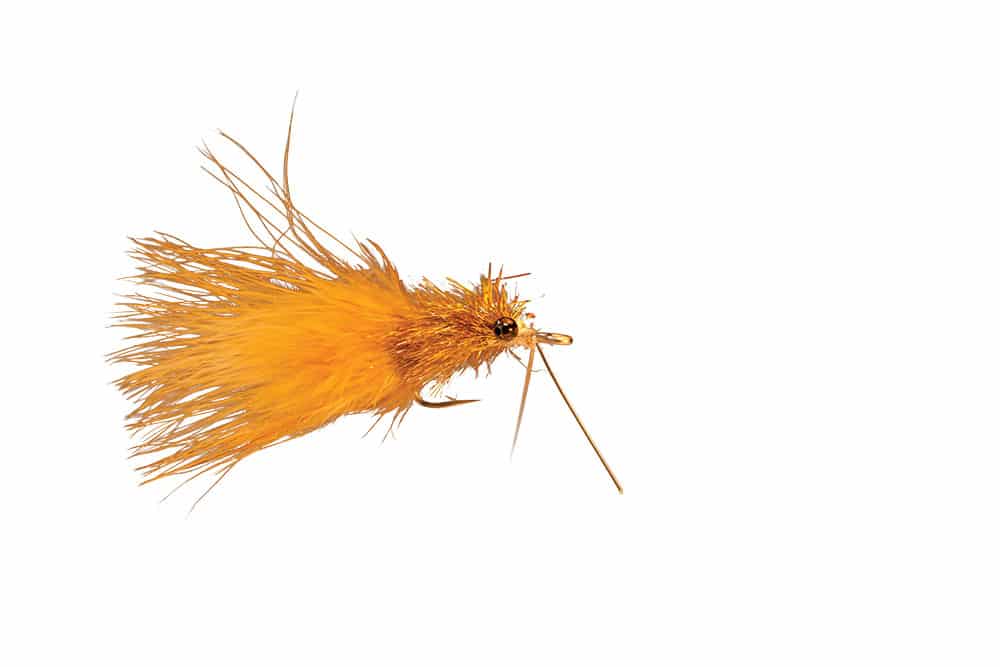Whether you fish for seatrout, snook, striped bass or redfish, certain locales and situations call for flies that prevent fouling on grass, rocks and such. They accomplish this through their basic design or by the addition of devices that protect the hook points, commonly referred to as “weed guards” — I’ll call them hook guards or simply guards. Their function is to avoid fouling or snagging on floating or rooted weeds, oyster beds, coral, rocks, wood, even bottom sand. Whether you tie them yourself, have someone tie them for you, or you buy them ready-made, adding a few of these flies to your arsenal is sure to improve your fishing.
Virtually every bonefish fly rides with the hook point up, providing reasonable freedom from snagging. Similarly, flies weighted with bead chain or lead eyes — such as Crazy Charlies and Clouser Minnows — and Conehead patterns, like Jiggies, also ride hook point up and are moderately foul-proof. It’s important to realize that all of these flies rely more on wing material than the added weight to orient them. The buoyancy of the bucktail or other hair orients the hook point up when it hits the water. In fact, a lot of hair tied above the shank, facing away from the bend, can actually counteract the weight of the heavy eyes and cause a Crazy Charlie or Clouser to flip over and ride with the hook point down. So be sure to tie the material on the inside of the bend, not all around the shank.
A variation of this design, the Bendback, should be a staple in the fly box of every inshore fisherman. It features a slightly bent shank, which puts some of the weight of the bend below the front part of the hook shank, acting like a keel. To further enhance this feature, I make a few wraps of wire around the shank, near the bend, and coat them with epoxy. Holding the hook behind the eye with pliers, I grasp the bend and pull down on it slightly to produce a soft curve in the shank, not a sharp angle, that keeps the hook point well exposed for hooking. As with bonefish flies, all wing material on Bendbacks is tied on the inside of the bend of the hook to keep the point riding upward.
All of the fly types mentioned afford reasonable hook protection as they slide through grass and bump over solid obstructions, but flies with added hook guards offer greater snag protection. Most such guards are made of monofilament or wire, single strand or braided. Keep in mind, however, that the purpose of a hook guard is to move the fly, not the obstacle. After all, no guard will push aside a rock, branch or coral. You simply want the fly to deflect around or over the obstruction. And don’t worry about missing strikes; most saltwater fish have powerful crushing jaws, and hook guards collapse under their pressure without hindering the hook-set.
If you tie your own flies, you can just make a loop (or two) of mono, tie the strands in along the shank and let them protrude out the back. When the fly is complete, just pull the strands around the hook bend and tie off on the underside of the head. You can also opt to add a straight piece (or two) of single-strand or braided wire just before whipping the head. Bend the wire so it extends just past the hook point at a 45-degree angle. You can even add guards to hard body poppers that you purchase. Heat a bodkin and sear a hole in the bottom of the foam body. Dip the end of a stiff piece of mono or braided wire into quick-dry epoxy and insert it in the hole.
Finally, there’s an ingenious guard that fly-tying guru Bob Popovics came up with. He added it to one of his Siliclone patterns, a fly tied Bendback style. Tie in a small bunch of bucktail behind the eye of the hook and coat it with regular household silicone to form a spike. Then trim it just past the hook point. The result is a springy, rubber guard that works amazingly well.
